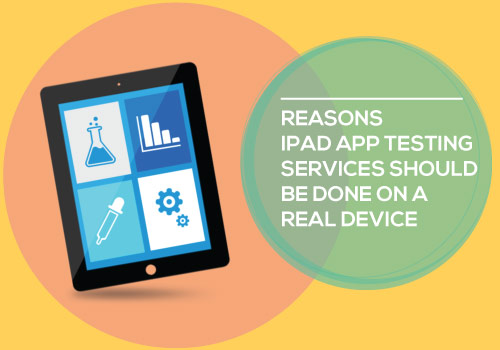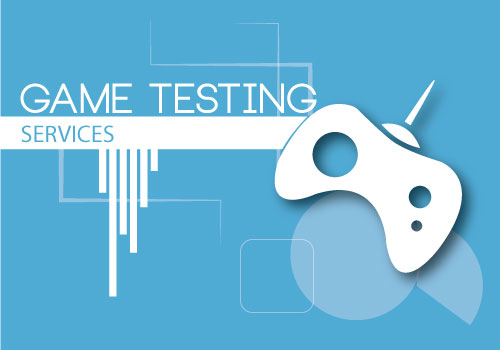In the dynamic world of game development, where creativity meets technology, one crucial aspect often goes unnoticed: game testing. While the spotlight shines on captivating visuals, immersive storylines, and thrilling gameplay, the game testers work tirelessly behind the scenes to ensure a smooth and enjoyable experience for players.
Game testing is vital in the development process, serving as the quality control checkpoint that guarantees a polished and bug-free game. Game testers meticulously play through every aspect of the game, identifying and reporting any glitches, errors, or inconsistencies that might hinder the player’s experience.
But the significance of game testing extends far beyond simply fixing bugs. It’s a vital tool for:
- Ensuring game stability and performance: Testers identify and report issues that could disrupt gameplay, such as crashes, freezes, and lag. This ensures players a smooth and immersive experience, preventing frustration and negative reviews.
- Balancing gameplay: Game testing helps maintain a balance in gameplay mechanics, ensuring that no element is too powerful or weak. This creates fair and engaging gameplay for players of all skill levels.
- Identifying usability issues: Testers provide feedback on the game’s user interface and controls, ensuring they are intuitive and easy for a wider audience. This makes the game more accessible and enjoyable for everyone.
- Enhancing game quality: By proactively addressing issues and collecting player feedback through testing, developers can continuously improve the game’s quality and polish, keeping players engaged and coming back for more.
In essence, game testing bridges the developer’s vision and the player’s experience. The meticulous attention to detail and relentless pursuit of quality ensure players immerse themselves in a world free from distractions and frustration, allowing them to enjoy the game’s true potential.
Game testing is crucial for ensuring a smooth and enjoyable user experience. Here are some unconventional methods, alongside examples, to uncover hidden bugs and defects:
Break the Rules:
- Example: Instead of saving the game at designated checkpoints, try saving mid-action or in unusual locations. This might reveal issues with save functionality.
- Example: Repeatedly press buttons rapidly or try to perform actions in illogical sequences. This can expose flaws in game logic or responsiveness.
Use Unconventional Methods:
- Example: Play the game in reverse order or skip crucial steps. This can highlight missing prompts or inconsistencies in the game flow.
- Example: Try walking through walls or interacting with objects in unintended ways. This can uncover collision detection problems or unintended consequences.
Test All Functions Everywhere:
- Example: Try using all available items and abilities, even in seemingly irrelevant situations. This might reveal hidden interactions or unintended effects.
- Example: Explore every corner of the game world, including seemingly inaccessible areas. This can expose missing textures, visual glitches, or hidden secrets.
Test Beyond the Scope:
- Example: Play the game with minimal inputs or user actions. This can highlight issues with AI behavior or game balance.
- Example: Play the game with maximum inputs, such as engaging in intense combat or triggering multiple events simultaneously. This can expose performance bottlenecks or stability problems.
Appoint New Testers for Each Build:
- Example: Rotating testers with fresh perspectives can help identify bugs experienced testers may overlook.
- Example: Different testers have different playstyles that can reveal diverse bugs and defects.
Examine Effects:
- Example: Play the game with modified settings, such as changing graphics quality or audio options. This can reveal compatibility issues or performance problems.
- Example: Run the game for extended periods or under extreme conditions, such as low battery or high temperatures. This can expose stability issues or memory leaks.
Test with Different Peripherals:
- Example: Test the game with controllers, keyboards, and other input devices. This can unearth compatibility issues or control problems.
- Example: Test the game on different audio systems and headsets to ensure optimal sound quality and compatibility.
Importance of Exploratory Testing in Game Testing
Unlike its scripted counterpart, exploratory testing embraces the unknown, inviting testers to venture beyond the confines of written test cases and delve into the depths of the game world with a curious spirit.
In game development, where captivating experiences and flawless gameplay reign supreme, exploratory testing emerges as a vital force. Unlike its scripted counterpart, exploratory testing embraces the unknown, inviting testers to venture beyond the confines of written test cases and delve into the depths of the game world with a curious spirit. This freedom fosters an environment of discovery, uncovering hidden bugs and defects that might otherwise remain undetected.
Here’s why exploratory testing is an integral part of ensuring a smooth and bug-free gaming experience:
- Uncovers the Unexpected: By exploring the game world in diverse ways, testers can uncover hidden bugs that might not be triggered by following predetermined test cases. This includes triggering unexpected events, trying illogical combinations of actions, and pushing the boundaries of the game’s mechanics.
- Enhances Creativity and Problem-Solving: Exploratory testing encourages testers to think creatively and approach the game from different perspectives. This leads to a deeper understanding of the game mechanics and a more comprehensive identification of potential issues.
- Improves Game Quality: By proactively discovering and resolving bugs early in the development process, exploratory testing significantly improves the game’s overall quality. This reduces the risk of encountering critical bugs later in development, saving time and resources.
- Adapts to Changes: Unlike scripted test cases that become obsolete with game updates and changes, exploratory testing is inherently adaptable. Testers can adjust their approach based on new features and modifications, ensuring the testing process remains relevant and practical.
- Focuses on User Experience: Exploratory testing emphasizes the user’s perspective. By playing the game in a way that simulates a real player’s experience, testers can identify issues that might hinder immersion or disrupt the gameplay flow.
Beta Testing! It’s Important!
Beta testers are typically given access to an unfinished version of the game and are encouraged to play it as much as possible and report any bugs they find. This allows developers to identify and fix bugs before the game is released, which can help to improve the overall quality of the game.
In addition to finding bugs, beta testing can also help to:
- Get feedback from players: Beta testers can provide valuable feedback on the game’s gameplay, graphics, and overall feel. This feedback can help developers make changes to the game before it is released.
- Build hype: Beta testing can help to build hype for a game by giving players a sneak peek at what to expect. This can help to generate excitement and anticipation for the game’s release.
- Identify potential problems: Beta testing can help identify potential problems with the game that may not have been apparent during development. This can help developers fix these problems before the game is released.
There are a few different ways to offer beta versions of games. Some developers release open betas, which are available to anyone who wants to play them. Others release closed betas, which are only available to a small group of people, such as friends, family, and members of the press.
Beta testing can be a great way for gamers to get their hands on a new game early and help to make it better. However, it is important to remember that beta versions of games are not always finished and may contain bugs. If you are considering participating in a beta test, it is important to be aware of the risks involved.
Conclusion
While the thrill of the game captivates players, the meticulous efforts of game testers often remain unseen. Their dedication goes beyond simply identifying bugs; it encompasses ensuring stability, balancing gameplay, and crafting a seamless experience that engages and enchants.
From unconventional testing techniques to collaborative beta initiatives, game testers bridge the gap between developer vision and player expectations. They transform raw potential into captivating journeys, ensuring that every player can truly immerse themselves in the world of the game.
If you would like to test your game, talk to us. Our solution offering is not a rigid one. We have resources and plans that can cater to any needs.











![The What, Why and How of Mobile Game Testing [Overview]](https://wp.testbytes.net/wp-content/uploads/2016/01/The-What-Why-and-How-of-Mobile-Game-Testing-Overview-1.jpg)